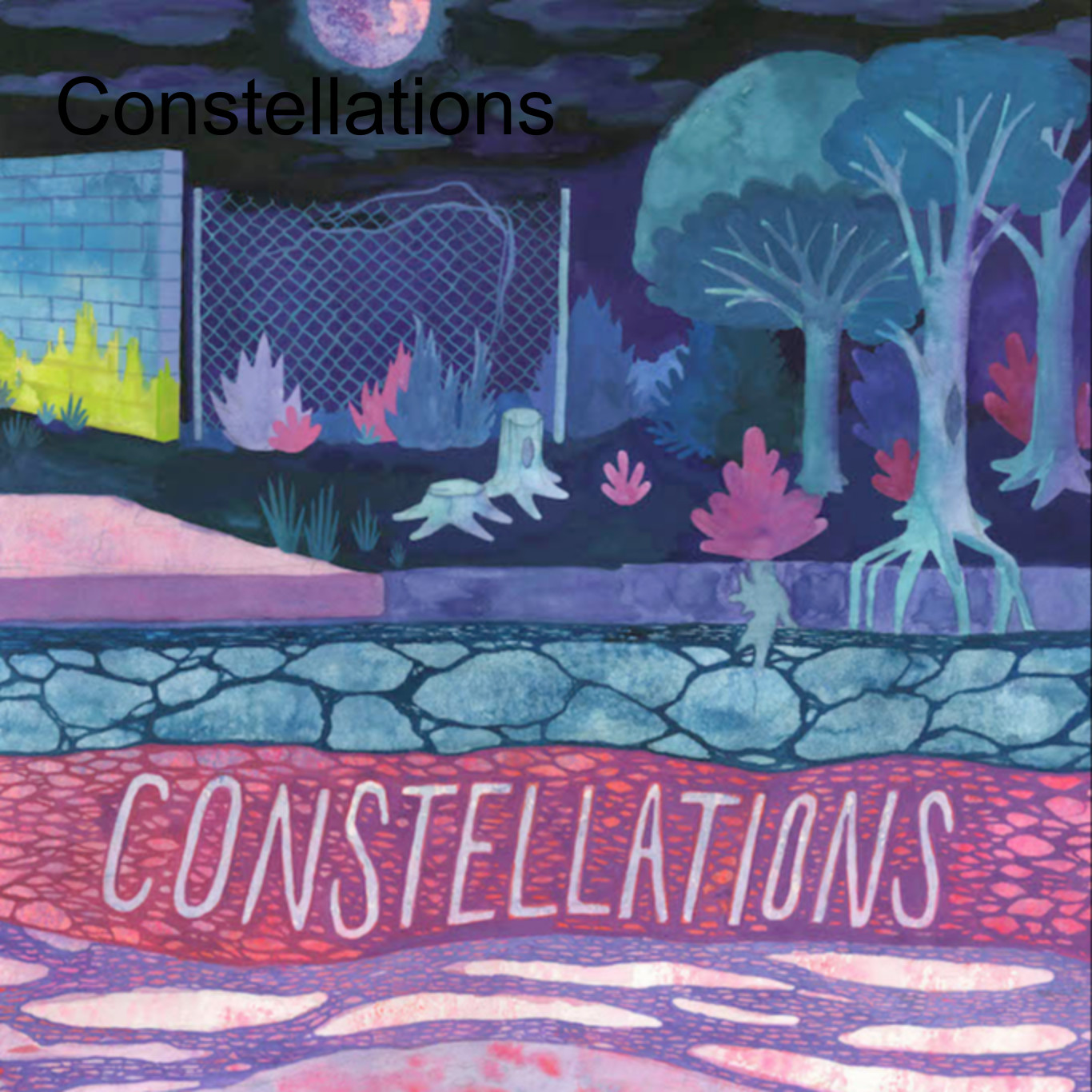Episodes
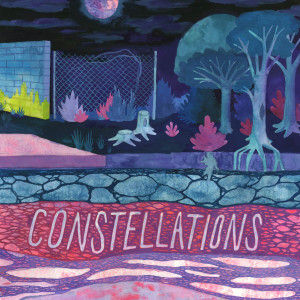
Thursday May 21, 2020
Constellations 2020 is HERE
Thursday May 21, 2020
Thursday May 21, 2020
Hello, Constellations is returning to your feeds with a delicious new season of audio oddities, soul-filled sounds and feed fucking. We can’t wait for you to hear what we’ve been up to. We’re throwing a (n online) party to celebrate our launch, THIS Friday, May 22 at 8:00pm EST / Saturday, May 23 at 10:00am AEST. It’s an intimate listening party and in-conversation with the artists behind our first physical release FEEL THE SKY. Tickets and more info here: https://www.facebook.com/events/836823783469230 And we’re back on your feeds NEXT WEEK, Friday May 29th, so keep an ear out for us then. Constellations~ FEED YOUR EARS
![RESONANT BODIES [the exhibition]](https://pbcdn1.podbean.com/imglogo/ep-logo/pbblog12532936/939a53f35289cdfda8706974de6c8a4f_300x300.png)
Saturday Dec 07, 2019
RESONANT BODIES [the exhibition]
Saturday Dec 07, 2019
Saturday Dec 07, 2019
Step inside the world of Resonant Bodies with this special hour-long episode that takes you piece-by-piece through the exhibition. Follow your ears through the ambient sounds of the gallery and stop off at each piece. Read alongside with the piece descriptions below. [00:24-09:02] Aliya Pabani, Singing on the Line Aliya Pabani goes to a vocal coach to look into the extent of her vocal cord damage, and the contours of the voice she has left. Originally constructed as a four-channel audio installation, this piece played back on four speakers fabricated from four balloons. [09:02-19:56] Jon Tjhia, Thing-Like How is a business phone call like a folk song or jazz standard? How much are non-words, and part-words, involved in how we communicate? Is it possible to speak into the void; to use our voices to communicate nothing at all? In Thing-Like, Jon Tjhia has created a suite of 'exercises' – basically analogous to piano études, or studies, for edited sound works. Taking Walter Ong's preoccupations with the 'immersive' and vital nature of oral culture as a point of departure, these pieces tease and critique the heavy burden of speech and its value: as social currency, blunt instrument, monetary resource and point of connection. This collection of short works is composed for speakers – inviting, intrusive, implicating the passer-by; and headphones – individual, interior. Traditional interviews, aimless conversations, paid celebrity dedications, forgotten sing-alongs, free improvisations, custom voice synthesis and chance murmurs become material for a process that is both informal and entirely formal. Speakers’ words are manipulated (‘say that again, but opposite’); license agreements are breached. While Ong argues that thought and expression have been fundamentally reconfigured by the technology of writing; Thing-Like suggests ways in which voice and speech have been reconfigured by the technology of money and how it structures time. [19:56-30:40] Kaija Siirala, Hamina, Finland “Where is the Cloud located on Earth?” Reflecting on the disembodied lexicon of virtual space, Kaija Siirala’s Hamina, Finland situates listeners at an unexpected nexus between digital and physical gathering places: the Hamina sauna. A relic of a retrofitted paper mill, this sauna is an employee perk at the Hamina Google data center in Southern Finland. Uniquely, seawater is channeled here to cool Google’s vast, active server bodies. Simultaneously, human bodies in the neighbouring sauna heat up after a day of work. The piece considers the often-obscured physical consequences of virtual activity by mapping it onto a visceral sauna experience. A watery world emerges through a whispered choir of google search histories, including Siirala’s own Hamina sauna research. Sauna is a central component of Finnish culture and is a lifelong practice Siirala inherited from her family. Her field recordings from these times together — sounds of breath, camaraderie, eruptions of laughter — underscore the piece. When water is tossed onto the rocks atop the stove, the löyly — steam in Finnish — mounts the heat to an intolerable crescendo forcing participants out of the sauna and into the same cold sea cooling the Google servers. Löyly shares the same etymological root as the Finnish word for “spirit”. [30:40-41:17] Cheldon Paterson, Transport Station Forests, rain, traffic — all seem to sound louder in the dark of night. For sighted people, hearing is the center point of attention only when visual input is absent or unclear. Cheldon Paterson’s Transport Station, composed as an audiovisual diptych plays with this tendency through spatial isolation of the audio and visual components of the work, so that they can be experienced both together and apart. In video form, Paterson’s audio comes first, setting up hearing as the primary mode of perceiving one’s environment. Listeners hear field recordings from urban and natural environments that have been twisted and turned on themselves through turntablism and sampling. The second half of the piece is accompanied by video, which employs the kaleidoscope as a visual metaphor for how the transformation of familiar sounds affects the imagination. While the interaction of sight and sound is usually clarifying to the senses, Paterson’s approach refracts memory and imagination, forcing the viewer-listener to succumb to the current of sensual input or become an active participant in meaning-making. [41:17-49:51] Chandra Melting Tallow, Protect Me From My Protector In her critique of romantic love, bell hooks writes, “This illusion, perpetuated by so much romantic lore, stands in the way of our learning how to love. To sustain our fantasy, we substitute romance for love.” In Protect Me From My Protector, Chandra Melting Tallow pierces the fantasy of romance to reveal the sharp, tense and dark edges of harm within intimate partner relationships. Dropping us into the emotional inner world of the artist, this work explores the intensity, confusion, and disorientation of living within the confines of abuse, including the cycles of trauma and cognitive dissonance that occur when one’s protector is simultaneously inflicting harm. The piece extends past personal relationships to confront power relations, particularly between the state as a protectorate and marginalized communities. When these communities are depicted as irrational and hysterical, the state reasserts power to remove their agency. As a result of such abuses of power, the world is heard and experienced differently by marginalized communities, so that music that once signaled romance can be recast as a tool of manipulation. [49:51-57:48] Phoebe Wang, Isn’t it lovely? Stepping inside Isn’t it lovely?, Phoebe Wang asks the audience to leave the known territory and comfort of the white-walled gallery space to become immersed in an isolated environment. Here, sights and sounds of walls, carpets, speech and din create a faux-warmth that is at once invasive and curious. The listener then must subject themselves to the sounds that enter their ears. The fragments of recorded memories that make up Isn’t it lovely? hover over meaning, never landing solidly. As the audio progresses, Wang prompts and engages in a series of conversations that attempt to ask, “why choose to keep going in a world that is not built for you?” In Isn’t it lovely?, Wang constructs a refuge of sorts – yet the systems and histories she seeks to evade or emancipate herself from continue to be felt here, too. ******************************************************* Resonant Bodies began as an exhibition in Toronto Canada. In Toronto, we’re situated within the ‘Dish with One Spoon Territory’ on the ancestral and traditional territories of the Anishnaabe, the Haudenosaunee, the Huron-Wendat First Nations, and the Mississaguas of the Credit First Nations. We acknowledge Canada’s First Peoples as the original inhabitants and storytellers of this land, and we pay respects to their ongoing storytelling traditions. Resonant Bodies was curated and produced by Aliya Pabani, Michelle Macklem and Jess Shane. Audio mixed by Michelle Macklem. Graphics designed by Jess Shane. The artists are: Aliya Pabani, Jon Tjhia, Kaija Siirala, Cheldon Paterson, Chandra Melting Tallow and Phoebe Wang. Resonant Bodies received exhibition support from many generous people and organizations. Thank you to Henry Faber, Jennie Robinson, Mitchell Akiyama, Amita Kirpalani, Braden Labonte, Liam Coo, Matthew Kariatsumari, Frank Green, Evan Cartwright, Robin Luckwaldt, Mitch Trachter, and Yuula Benivolski. Special thanks to the terrific folks at the Toronto Media Arts Centre for partnering with us and making this event possible. Thanks also to community partner Charles Street Video. Resonant Bodies was supported by the Toronto Arts Council and the Ontario Arts Council.
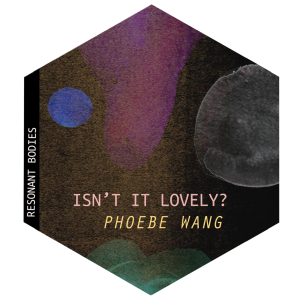
Friday Nov 29, 2019
Phoebe Wang ~ Isn't it lovely?
Friday Nov 29, 2019
Friday Nov 29, 2019
Stepping inside Isn’t it lovely?, Phoebe Wang asks the audience to leave the known territory and comfort of the white-walled gallery space to become immersed in an isolated environment. Here, sights and sounds of walls, carpets, speech and din create a faux-warmth that is at once invasive and curious. The listener then must subject themselves to the sounds that enter their ears. The fragments of recorded memories that make up Isn’t it lovely? hover over meaning, never landing solidly. As the audio progresses, Wang prompts and engages in a series of conversations that attempt to ask, “why choose to keep going in a world that is not built for you?” In Isn’t it lovely?, Wang constructs a refuge of sorts – yet the systems and histories she seeks to evade or emancipate herself from continue to be felt here, too.
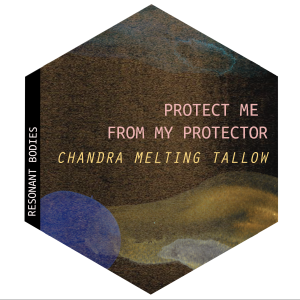
Friday Nov 22, 2019
Chandra Melting Tallow ~ Protect Me From My Protector
Friday Nov 22, 2019
Friday Nov 22, 2019
In her critique of romantic love, bell hooks writes, “This illusion, perpetuated by so much romantic lore, stands in the way of our learning how to love. To sustain our fantasy, we substitute romance for love.” In Protect Me From My Protector, Chandra Melting Tallow pierces the fantasy of romance to reveal the sharp, tense and dark edges of harm within intimate partner relationships. Dropping us into the emotional inner world of the artist, this work explores the intensity, confusion, and disorientation of living within the confines of abuse, including the cycles of trauma and cognitive dissonance that occur when one’s protector is simultaneously inflicting harm.
The piece extends past personal relationships to confront power relations, particularly between the state as a protectorate and marginalized communities. When these communities are depicted as irrational and hysterical, the state reasserts power to remove their agency. As a result of such abuses of power, the world is heard and experienced differently by marginalized communities, so that music that once signaled romance can be recast as a tool of manipulation.
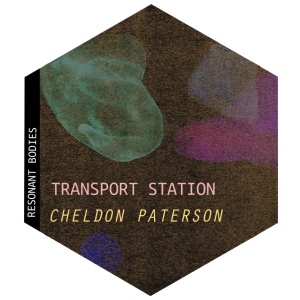
Friday Nov 15, 2019
Cheldon Paterson ~ Transport Station
Friday Nov 15, 2019
Friday Nov 15, 2019
Forests, rain, traffic — all seem to sound louder in the dark of night. For sighted people, hearing is the center point of attention only when visual input is absent or unclear. Cheldon Paterson’s Transport Station, composed as an audiovisual diptych (though is also released via podcast as audio-only) plays with this tendency through spatial isolation of the audio and visual components of the work, so that they can be experienced both together and apart. In video form, Paterson’s audio comes first, setting up hearing as the primary mode of perceiving one’s environment. Listeners hear field recordings from urban and natural environments that have been twisted and turned on themselves through turntablism and sampling. The second half of the piece is accompanied by video, which employs the kaleidoscope as a visual metaphor for how the transformation of familiar sounds affects the imagination. While the interaction of sight and sound is usually clarifying to the senses, Paterson’s approach refracts memory and imagination, forcing the viewer-listener to succumb to the current of sensual input or become an active participant in meaning-making.
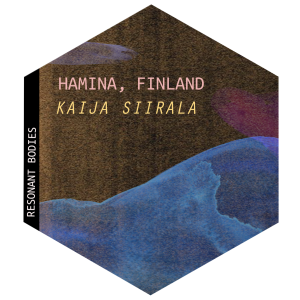
Friday Nov 08, 2019
Kaija Siirala ~ Hamina, Finland
Friday Nov 08, 2019
Friday Nov 08, 2019
“Where is the Cloud located on Earth?” Reflecting on the disembodied lexicon of virtual space, Kaija Siirala’s Hamina, Finland situates listeners at an unexpected nexus between digital and physical gathering places: the Hamina sauna. A relic of a retrofitted paper mill, this sauna is an employee perk at the Hamina Google data center in Southern Finland. Uniquely, seawater is channeled here to cool Google’s vast, active server bodies. Simultaneously, human bodies in the neighbouring sauna heat up after a day of work. The piece considers the often-obscured physical consequences of virtual activity by mapping it onto a visceral sauna experience. A watery world emerges through a whispered choir of google search histories, including Siirala’s own Hamina sauna research. Sauna is a central component of Finnish culture and is a lifelong practice Siirala inherited from her family. Her field recordings from these times together — sounds of breath, camaraderie, eruptions of laughter — underscore the piece. When water is tossed onto the rocks atop the stove, the löyly — steam in Finnish — mounts the heat to an intolerable crescendo forcing participants out of the sauna and into the same cold sea cooling the Google servers. Löyly shares the same etymological root as the Finnish word for “spirit”. A watery world emerges through a whispered choir of google search histories, including Siirala’s own Hamina sauna research. Sauna is a central component of Finnish culture and is a lifelong practice Siirala inherited from her family. Her field recordings from these times together — sounds of breath, camaraderie, eruptions of laughter — underscore the piece. When water is tossed onto the rocks atop the stove, the löyly — steam in Finnish — mounts the heat to an intolerable crescendo forcing participants out of the sauna and into the same cold sea cooling the Google servers. Löyly shares the same etymological root as the Finnish word for “spirit”.
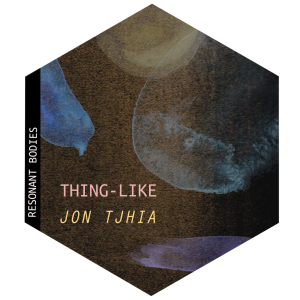
Friday Nov 01, 2019
Jon Tjhia ~ Thing-Like
Friday Nov 01, 2019
Friday Nov 01, 2019
In Thing-Like, Jon Tjhia has created a suite of 'exercises' – basically analogous to piano études, or studies, for edited sound works. Taking Walter Ong's preoccupations with the 'immersive' and vital nature of oral culture as a point of departure, these pieces tease and critique the heavy burden of speech and its value: as social currency, blunt instrument, monetary resource and point of connection.
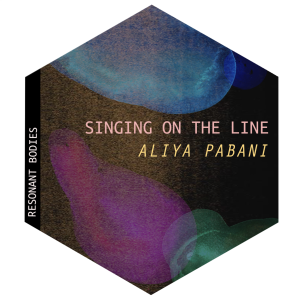
Friday Oct 25, 2019
Aliya Pabani ~ Singing on the Line
Friday Oct 25, 2019
Friday Oct 25, 2019
“This piece comes out of a desire that I've had for a long time to map out the damage to my vocal cords. As a kid, I used to scream a lot and throw a lot of tantrums and I think that might have caused stress to my vocal cords and that's why I have the voice that I have right now. And although I really like my voice, I can't actually sing very well. I have a really limited range. And so I wanted to speak to a vocal coach and do a vocal lesson to see what my voice could do.” ~Aliya Pabani
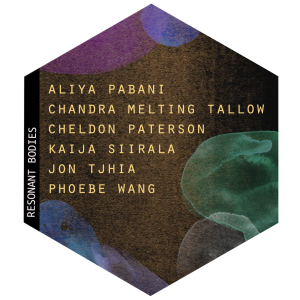
Friday Oct 18, 2019
Resonant Bodies {Oct 25 – Dec 2}
Friday Oct 18, 2019
Friday Oct 18, 2019
Constellations returns on October 25 to Dec 2 with Resonant Bodies – an online exhibition and short season about the interactions between bodies and their environments. It features original works by: Aliya Pabani Chandra Melting Tallow Cheldon Paterson Kaija Siirala Jon Tjhia Phoebe Wang We asked these artists to create works in response to this provocation by Walter Ong: "Sight isolates, sound incorporates. Whereas sight situates the observer outside what [they view], at a distance, sound pours into the hearer."
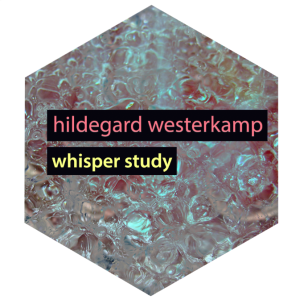
Friday Jul 12, 2019
hildegard westerkamp - whisper study
Friday Jul 12, 2019
Friday Jul 12, 2019
“Whisper Study started out as an exercise in exploring basic tape techniques in the studio, using the whispered voice as sound material. It’s based on the sentence "When there is no sound, hearing is most alert", a quote from the Indian mystic Kirphal Singh in Naam or Word. The content of that sentence appealed to me. I thought a lot about it and then decided I was going to whisper that sentence. I ended up with this very quiet recording of my whispered voice. In doing this, I was challenging myself, because whispered sounds in an analog studio create the issue of hiss and added noise.”

